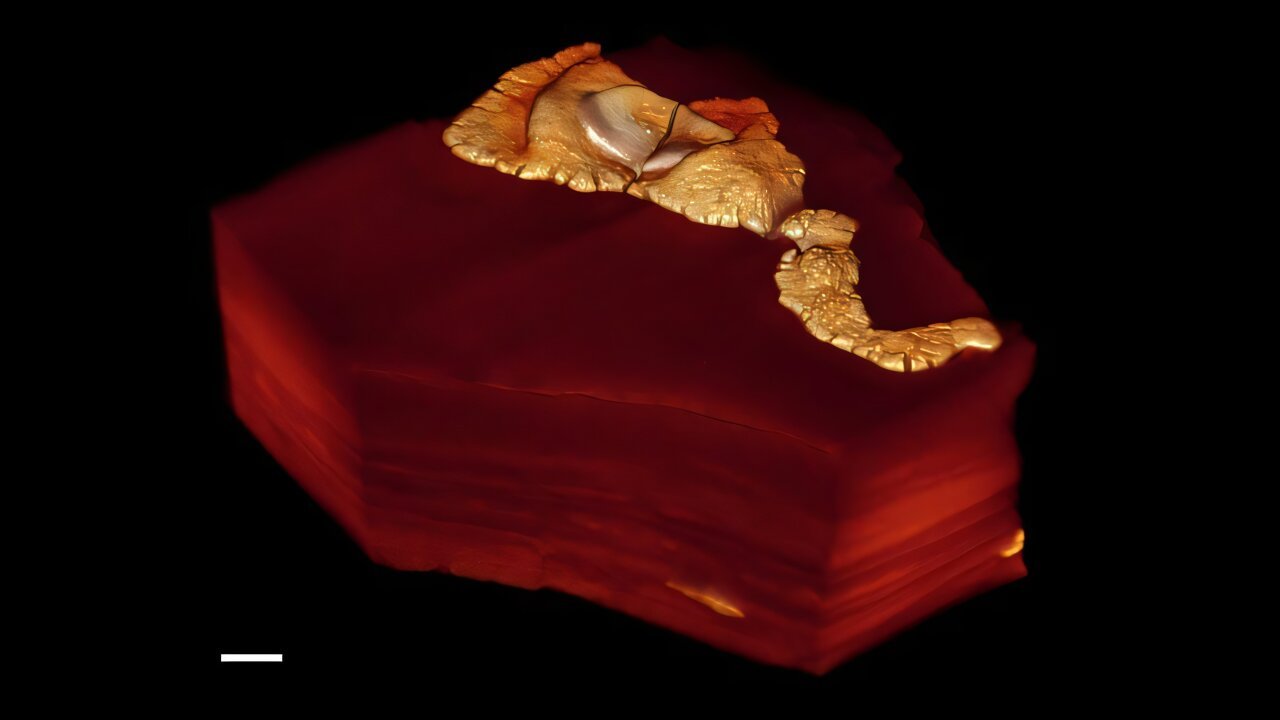Hidden deep inside every living cell lies an intricate thread of biological instruction—a blueprint that determines the shape of our noses, the color of our eyes, how tall we may grow, and even our vulnerability to certain diseases. These blueprints are called chromosomes, and they are among the most fundamental components of life on Earth.
Though invisible to the naked eye, chromosomes are the ultimate custodians of life’s most precious information. They carry our DNA—the molecules that encode all the instructions for building and running an organism. Whether you are a towering redwood, a colony of coral, or a curious human, your chromosomes have guided every biological process since the day you were conceived.
But what exactly is a chromosome? How does it function? Why does it matter so much to life, health, and evolution? The answer lies in a tale that combines ancient mystery, dazzling science, evolutionary strategy, and a molecular ballet unfolding within us every second of our lives.
The Discovery: From Stains to Science
The word “chromosome” comes from the Greek words chroma, meaning color, and soma, meaning body. This name was coined in the late 1800s when early scientists discovered thread-like structures in the cell nucleus that stained vividly under a microscope. At the time, their function was a complete mystery.
It wasn’t until the early 20th century that chromosomes were definitively linked to heredity. Scientists like Walter Sutton and Theodor Boveri proposed that chromosomes carried genetic information—a radical idea that challenged earlier notions of inheritance. This led to the modern field of genetics, and eventually to one of the most revolutionary discoveries in biology: the identification of DNA as the molecule of heredity.
Today, thanks to technologies like high-resolution microscopy, DNA sequencing, and molecular modeling, we know that chromosomes are complex packages of DNA and protein, expertly coiled and folded to fit inside a tiny nucleus. Their discovery marks one of the most important milestones in biological science.
What Are Chromosomes Made Of?
At its core, a chromosome is made up of DNA, short for deoxyribonucleic acid. This DNA is coiled around protein structures called histones, much like thread wound around a spool. The resulting structure is known as chromatin. When a cell is not dividing, chromatin exists in a loosely packed state, allowing genes to be accessed and used. But when a cell prepares to divide, the chromatin condenses tightly into the iconic X-shaped chromosomes we often see in biology textbooks.
A single human chromosome can carry hundreds or even thousands of genes, which are the instructions for making proteins—molecules that perform virtually all tasks in a cell, from catalyzing reactions to providing structure. Each gene occupies a specific location, or locus, on a chromosome. Between these genes lie long stretches of non-coding DNA, some of which regulate gene activity, while others remain enigmatic—molecular dark matter still waiting to be understood.
In addition to DNA and histones, chromosomes contain other proteins that control the expression, duplication, and repair of genetic material. These proteins help ensure that chromosomes are maintained correctly and passed on properly during cell division.
The Chromosome Count: Why Numbers Matter
One of the most surprising facts about chromosomes is that different species have different numbers of them. Humans have 46 chromosomes, arranged in 23 pairs. One chromosome of each pair comes from your mother, the other from your father. That means you carry genetic material from both sides of your family in every cell.
These 23 pairs include 22 pairs of autosomes, which carry most of our genetic information, and one pair of sex chromosomes, which determine your biological sex. Females typically have two X chromosomes (XX), while males have one X and one Y (XY).
Other organisms have different numbers. Fruit flies, for example, have 8 chromosomes. Dogs have 78. Ferns can have hundreds. But chromosome number doesn’t necessarily correlate with complexity—what matters more is the organization and function of the genes they carry.
Too few or too many chromosomes, however, can cause serious problems. Conditions like Down syndrome, Turner syndrome, and Klinefelter syndrome result from missing or extra chromosomes, and they underscore just how finely tuned our chromosome count must be for normal development and health.
DNA Packaging: The Marvel of Miniaturization
A single human cell contains about 2 meters of DNA—that’s roughly 6.5 feet—yet it fits inside a nucleus only about 6 microns wide. That’s like cramming 24 miles of string into a tennis ball and still being able to find and read specific instructions on any part of it in milliseconds.
How is this feat of molecular engineering accomplished?
It begins with DNA wrapping around histone proteins to form nucleosomes—bead-like structures on a string of DNA. These nucleosomes coil and fold into increasingly compact forms, eventually forming chromatin loops and ultimately condensing into a full chromosome during cell division.
This hierarchical packaging isn’t just for space-saving. It also serves to regulate gene expression. Some regions of the chromosome are tightly packed and rarely used—these are called heterochromatin. Others are loosely packed and actively read—these are euchromatin. This dynamic packaging system determines which genes are turned on or off, when, and in what cell type.
The Cell Cycle and Chromosomes: A Choreographed Performance
Chromosomes don’t just sit around. They are dynamic players in the cell’s life cycle. When a cell divides—a process called mitosis—chromosomes are at center stage.
Before division, each chromosome replicates, forming two identical sister chromatids joined at a point called the centromere. During mitosis, these chromatids are pulled apart, ensuring that each daughter cell receives an exact copy of the genetic material. The elegance of this process is astounding. Microtubules form a mitotic spindle, chromosomes align perfectly at the center of the cell, and motor proteins pull them toward opposite poles with surgical precision.
This process is critical not just for growth, but also for repair and regeneration. Every time you scrape your skin, the healing process involves countless cells dividing and distributing chromosomes with perfect fidelity. When this process goes wrong—if chromosomes are duplicated incorrectly, or not divided evenly—it can lead to cancer or cell death.
In germ cells (eggs and sperm), a different form of division occurs—meiosis—which reduces the chromosome number by half and introduces genetic diversity through recombination. This ensures that offspring have a unique mix of genetic material, which fuels evolution and natural selection.
Chromosomes and Inheritance: The Genetic Lottery
When you inherit chromosomes from your parents, you inherit not just their features, but also a genetic legacy that stretches back thousands of generations. The process of recombination during meiosis ensures that chromosomes exchange segments, creating new combinations of genes in each generation.
This mixing and matching is why siblings can look quite different from one another despite having the same parents. It’s also why genetic inheritance is both predictable and wildly variable. You may inherit your father’s jawline but your mother’s dimples, and a great-grandparent’s musical talent might resurface in your child.
The study of how traits are passed through chromosomes forms the foundation of genetics, a field that has revolutionized medicine, agriculture, forensics, and evolutionary biology. By analyzing chromosomes, scientists can trace ancestry, diagnose genetic diseases, and even engineer new traits in plants and animals.
Chromosomal Disorders: When the Code Goes Awry
Despite the incredible precision of chromosome replication and distribution, errors do occur. When they do, the consequences can be profound.
One common error is nondisjunction, when chromosomes fail to separate properly during meiosis. This can lead to an extra or missing chromosome in the resulting egg or sperm. When such a cell participates in fertilization, the resulting embryo may have a chromosomal disorder.
Down syndrome, for example, is caused by an extra copy of chromosome 21 (trisomy 21). Turner syndrome results from a missing X chromosome in females (monosomy X), while Klinefelter syndrome involves an extra X in males (XXY).
Other disorders arise from deletions, duplications, inversions, or translocations of chromosome segments. Some cause developmental delays, physical abnormalities, or increased risk of cancer. Advances in genetic testing, including karyotyping and genome sequencing, now allow many of these conditions to be diagnosed prenatally or at birth.
Chromosomes in Evolution: A Molecular Time Machine
One of the most fascinating aspects of chromosomes is their role in evolution. By comparing chromosome structures and sequences across species, scientists can trace evolutionary relationships and discover how life has changed over time.
Humans and chimpanzees, for instance, share over 98% of their DNA, and our chromosomes are remarkably similar. But there’s a twist: humans have 46 chromosomes, while chimps have 48. What happened?
Genetic evidence shows that two ancestral ape chromosomes fused end-to-end to form human chromosome 2. This fusion is visible under a microscope and is a stunning example of how major chromosomal changes can occur over evolutionary time.
Chromosomes also play a role in speciation, the process by which new species arise. When populations become isolated and accumulate chromosomal differences, they may become reproductively incompatible. Over millennia, such changes can lead to the formation of entirely new species.
Telomeres and Aging: The Countdown Clock
At the ends of each chromosome lie structures called telomeres—repeating sequences of DNA that protect the chromosome from deterioration. Think of them as the plastic tips on shoelaces that prevent fraying.
Every time a cell divides, its telomeres get slightly shorter. Eventually, they become too short to protect the DNA, and the cell stops dividing. This process, known as replicative senescence, is a key part of aging.
Some cells—like those in the immune system, or cancer cells—produce an enzyme called telomerase that rebuilds telomeres and allows continued division. Scientists are exploring telomerase as a potential key to longevity, cancer treatment, and regenerative medicine.
Telomeres offer a profound reminder: even at the microscopic level, life has built-in limits. But understanding those limits could unlock new paths to extending life and health.
The Chromosome Frontier: Gene Editing, Synthetic Life, and Beyond
We are now entering a new era—one where chromosomes are not just read and studied, but edited and engineered.
Technologies like CRISPR-Cas9 allow scientists to make precise changes to DNA sequences within chromosomes. This opens the door to curing genetic diseases, improving crop yields, or even designing entirely new organisms.
Researchers are also exploring the possibility of creating synthetic chromosomes—artificially assembled strands of DNA that function within living cells. In 2019, scientists created a yeast cell with a completely synthetic set of chromosomes, proving that life can be built from scratch.
As our understanding of chromosomes deepens, so too does our power to shape the future of life on Earth. But with that power comes ethical responsibility. Where do we draw the line between healing and enhancement? Between research and playing god?
These are the questions that will define the next century of chromosome science.
Conclusion: The Threads That Bind Us
Chromosomes are much more than cellular structures. They are the threads that weave together the story of life—threads that have shaped evolution, governed inheritance, and defined what it means to be human.
From the moment you began as a single cell, your chromosomes have guided your development, maintained your body, and shaped your destiny. They carry the echoes of your ancestors and the potential of your future children. They are a testament to nature’s genius, coiled in a molecule just a few nanometers wide.
As science continues to unravel the secrets of chromosomes, one thing becomes clear: within these tiny structures lies not just the code of life, but a reflection of life’s beauty, fragility, and boundless possibility.






